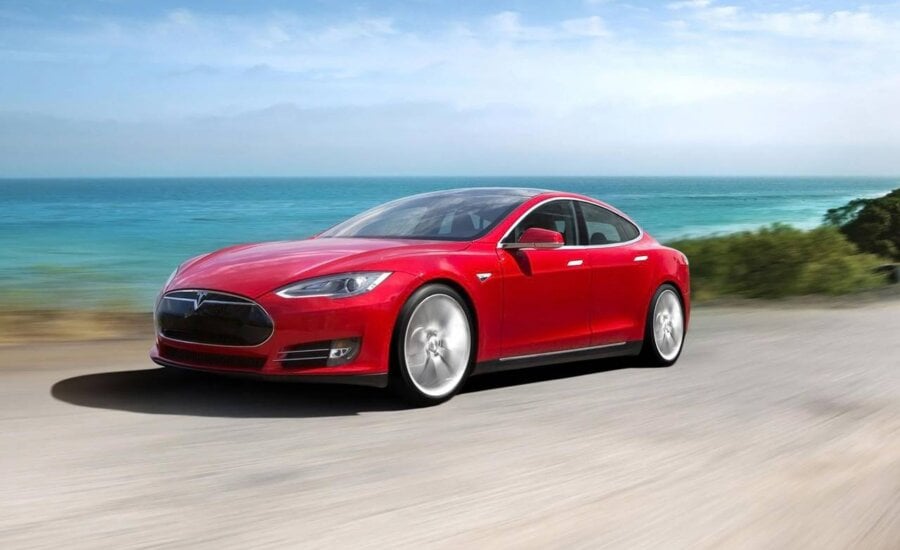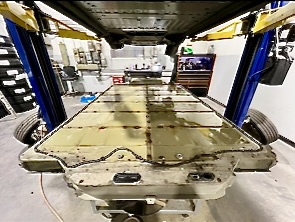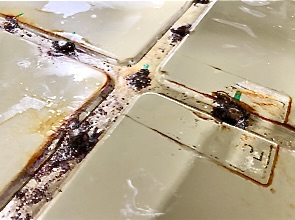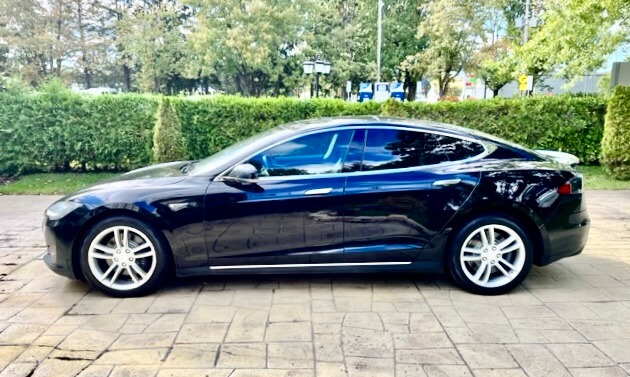Repairing corrosion on a Tesla Model S after the battery warranty has expired
Corroded battery packs and circuitry in electric vehicles are an emerging problem. How much does it cost to repair a corroded Model S battery?
Advertisement
Corroded battery packs and circuitry in electric vehicles are an emerging problem. How much does it cost to repair a corroded Model S battery?

I am the second owner of a 2013 Tesla Model S with 213,000 km on the odometer. Recently my battery range dropped to about 150 km and the car triggered an alert. I took my car to the Tesla service centre in Montreal and paid $420 for a diagnosis. Conclusion: the entire battery pack has to be replaced. The estimate for the replacement is $25,500 plus tax. Tesla was not prepared to help me with the huge cost of this repair because the 8 year/160,000 km new vehicle warranty had expired.
I took my vehicle to an independent shop that specializes in repairs on EVs for a second diagnosis. They determined that corrosion has damaged the battery casing.
As you can see from the images, I keep my car in top shape. Unfortunately, I’m past the battery warranty on my Model S, and Tesla is not prepared to contribute anything toward the repair.
–Montreal, Que.
Battery pack and battery circuitry corrosion is an emerging issue as EVs and hybrids start to age and accumulate mileage.
I contacted the Montreal-area repair shop that prepared your car’s diagnosis, VE Mtl on 4th Avenue. According to Michael Tempone, director of the service department, the damage is a consequence of water infiltration that creates problems after seven or eight winters or 150,000 km. Tempone says that on the Model S, the location of the air conditioner drain allows condensation to drip onto the battery case, which is a contributing factor. The weakness is compounded by salt and slush on winter roads in eastern North America, creating ripe conditions for underbody corrosion.


The repair involves checking components, replacing or cleaning corroded parts, and protecting the battery case with a better-quality sealer. VE Mtl’s estimate to repair your vehicle is in the range of $4,000 to $5,000. If water damage has impacted modules inside the battery case, the cost can climb to $8,000.
Tempone recommends that Model S and X owners who intend to keep their vehicles for the long haul perform a complete battery reseal before the eight-year factory warranty on the batteries expires. The cost of the service is about $3,500, assuming internal parts have not sustained damage, and it should provide corrosion resistance for the remaining life of a vehicle operated in a high-corrosion environment.
Here are the steps an aftermarket repair shop specializing in battery repair takes to diagnose and fix the corrosion on a Tesla Model S or X battery pack:
Tesla is not the only electric vehicle (EV) manufacturer experiencing issues with water infiltration or corrosion damage to battery modules or their circuitry. The Automobile Protection Association (APA) has received complaints on the Nissan Leaf as recently as the 2018 model year, and the Ford Focus EV, among others. And Toyota is currently the subject of a class action lawsuit over corrosion of the wiring connection to the rear motor on several of its hybrid models.

Currently, very few aftermarket shops are capable of providing the cheaper workarounds the manufacturers should have developed for their dealerships. Tempone says that the steps involved in repairing a corroded battery pack vary depending on the extent of the damage and the techniques used by the aftermarket shop.
To the APA’s knowledge, Tesla does not perform this sort of work, preferring to replace the entire battery pack after corrosion damage has degraded its performance or rendered the vehicle inoperable.
In Quebec, the automaker does not have the last word on warranty coverage. The province’s Consumer Protection Act provides the following warranties, which are mandatory and cannot be limited by the automaker. These “legal warranties” apply automatically, whether or not they appear in the automaker’s documentation:
Section 37: Goods … must be fit for the purposes for which goods of that kind are ordinarily used.
Section 38: Goods … must be durable in normal use for a reasonable length of time …
Section 53: A consumer who has entered into a contract with a merchant is entitled to exercise directly against the merchant or the manufacturer a recourse based on a latent defect in the goods forming the object of the contract, unless the consumer could have discovered the defect by an ordinary examination.
The same rule applies where there is a lack of instructions necessary for the protection of the user against a risk or danger of which he would otherwise be unaware.
The merchant or the manufacturer shall not plead that he was unaware of the defect or lack of instructions. The rights of action against the manufacturer may be exercised by any consumer who is a subsequent purchaser of the goods.
A “drip-drip-drip” water infiltration resulting from a poorly placed AC drain likely constitutes a hidden defect under the Consumer Protection Act.
The average life of a new vehicle today is 15 years and approximately 300,000 km, and major components are expected to last the life of the vehicle. In the long run, better shielding of the battery case and its circuitry against corrosion will likely become the norm, as automakers gain more experience with EV technology.
Is the battery pack a major component designed to last the lifetime of a vehicle, or is it considered a wear item after a certain period? In my view, at $25,000 for a new pack with no possibility of repair after 10 years, the manufacturer had a duty to disclose this material fact before selling the vehicle to you, and it may have a duty to contribute toward the replacement of the part after its written warranty has expired.
In the early days, Tesla was extraordinarily generous with warranty coverage for known defects on the Model S and X. Owners told us that after their vehicles broke down, Tesla had them towed, contacted a rideshare company to provide the passengers a lift home and sometimes even delivered a courtesy vehicle right to the owner’s driveway for the duration of repairs.
Tesla appears to show less largesse today, but it may still be worth asking the company in writing to step up with some compensation despite the high vehicle mileage and age of your vehicle, because this is a known weakness in your market. In Quebec, that could be followed up with a registered letter, as that is a precursor to filing a small claim in court, should you eventually take that route.
George Iny is the Executive Director of the Automobile Protection Association (APA), a consumer advocacy association with offices in Toronto and Montreal.
Share this article Share on Facebook Share on Twitter Share on Linkedin Share on Reddit Share on Email
I feel sorry for the Tesla owner. Although EV is new technology, corrosion problem is not. We should have better consumer right.
Thanks to George Iny for taking the time providing valuable information to new EV buyers. I read advice that one should buy as much extra warranty as possible when buying new EV, maybe something to consider if that warranty is useful at the end.
This is a good reason for me to keep driving a gas engine.
The amount saved in using electricity instead of gasoline for that mileage could, depending on which ICE he didn’t have to drive that distance, could possibly pay for the new battery